What is one of Australia’s cheapest new car really like? The Kia Picanto has again been updated with a sharper design and more safety tech.
Gone are the days of a sub-$20K drive-away new car. What was once a market saturated by micro and light car choices – such as the Ford Fiesta, Hyundai i20, and Honda Jazz – is now almost deserted.
But, the Kia Picanto city-sized hatchback lives on in 2024, receiving its second facelift following an update in 2020 and original local launch in 2017.
While it’s no longer under the golden $20K barrier, it’s still excellent value and refreshing in a sea of larger vehicles.
Is the Picanto still relevant amid the tide of first new car buyers favouring small SUVs?
NOTE: The press vehicle was provided by Kia Australia for a seven-day independent evaluation. No copy approval was given before publication and we have no commercial arrangements with the company.


Pros.
+ Striking new design
+ Standard safety tech upgrade
+ Refreshingly compact size
+ Practical interior
+ Still affordable price
Cons.
– Over-sensitive auto lights
– High running costs
– Old, unrefined engine
– No proximity key
– But the new MG 3 hybrid…
Vehicle tested:
| Model | 2024 Kia Picanto |
| Variant | GT-Line (auto) |
| Starting price | $21,290 (before on-road costs) |
| Exterior colour | Sporty Blue ($520) |
| Interior colour | Black interior – premium seats with grey accents |
| Country made | South Korea |

Design.
The new Kia Picanto’s fresh, edgy design is a highlight – and even a head turner.
The facelift dials the sporty exterior look to 11 with Kia’s latest edgy ‘Opposites United’ design theme, which has rolled out across the line-up from the popular Seltos to the flagship EV9.
Key to its distinctive design are sharp LED headlights – with a prominent full-width light bar – an aggressive front bumper, gloss black trims all-round, stretched full-width LED tail-light to give a widened stance, and 16-inch alloy wheels.
These elements are exclusive to the top-spec GT-Line variant – and is a key reason to spend the extra $1800 for a more attractive design compared to the Sport.
The large and sharp lights are all fit in a small package, with a long 2400mm wheelbase.





Cheap isn’t boring.
The refreshed Picanto GT-Line looks far more striking than its budget-friendly price tag suggests.
However, the mostly unchanged interior doesn’t reflect the new sporty exterior as well.
Unfortunately, the interior hasn’t received as much attention. The refresh has only swapped out the previous Picanto GT-Line’s red highlights on the seat buckets and leatherette stitches in favour of white-grey accents.
While it lifts the Picanto to feel more mature, the interior doesn’t reflect the new sharp exterior design – with the same bubbly air vents, single chrome dashboard strip, and basic centre console.
However, the GT-Line exclusive flat-bottom leatherette steering wheel is satisfying to hold with grippy perforations – feeling well beyond what the ~$24K drive-away price tag suggests.
The Picanto GT-Line interior also gains slightly padded vinyl on the front door armrests with double white stitching, gloss black trims, and metallic-look pedals.
The interior doesn’t feel overly cheap or flimsy given the price tag – even though the hard plastics are unchanged and, understandably, dominate the cabin. That is except for my tester’s slightly loose physical air-conditioning temperature dial.


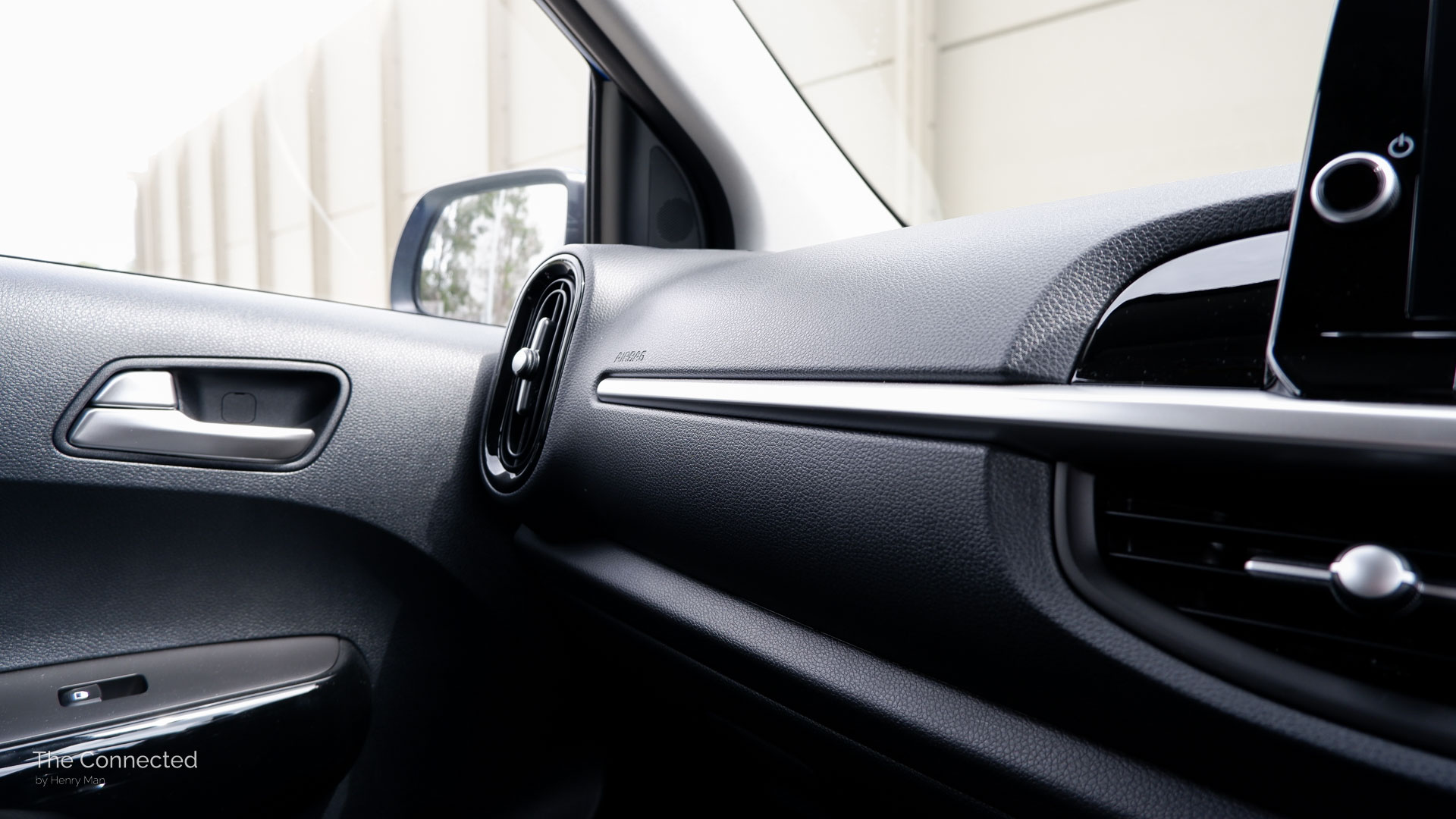


Practicality.
2024 Kia Picanto GT-Line dimensions:
| Length x width x height | 3595 x 1595 x 1485mm |
| Wheelbase | 2400mm |
| Ground clearance | 141mm |
| Boot space (min / rear seats folded) | 255 / 1010 litres |
| Rear seat split fold | 60:40 |
| Child seat anchors | 2x ISOFIX (outer rear seats) + 3x top tethers |
The Kia Picanto is a reality check on how big your car really needs to be.
With 255 litres of boot space, it offers more volume on paper than the larger Mazda 2 light hatch and most Toyota Corolla hatch variants – but just less than its closest-sized rival, the Suzuki Ignis micro car.
To achieve this, the Picanto’s boot is very deep so you’ll need to use more effort to lift heavy items up beyond the loading lip. Similarly, folding down the rear seats expands the cargo space when needed, but you’ll need to contend with a substantial hump between the boot floor and rear bench.
Impressively, there are four bag hooks (two sturdy ones) – which isn’t even guaranteed in large family SUVs. The narrow boot also means items don’t move around as much, if they aren’t secured.
The redesigned tailgate is light to open and close with one hand.
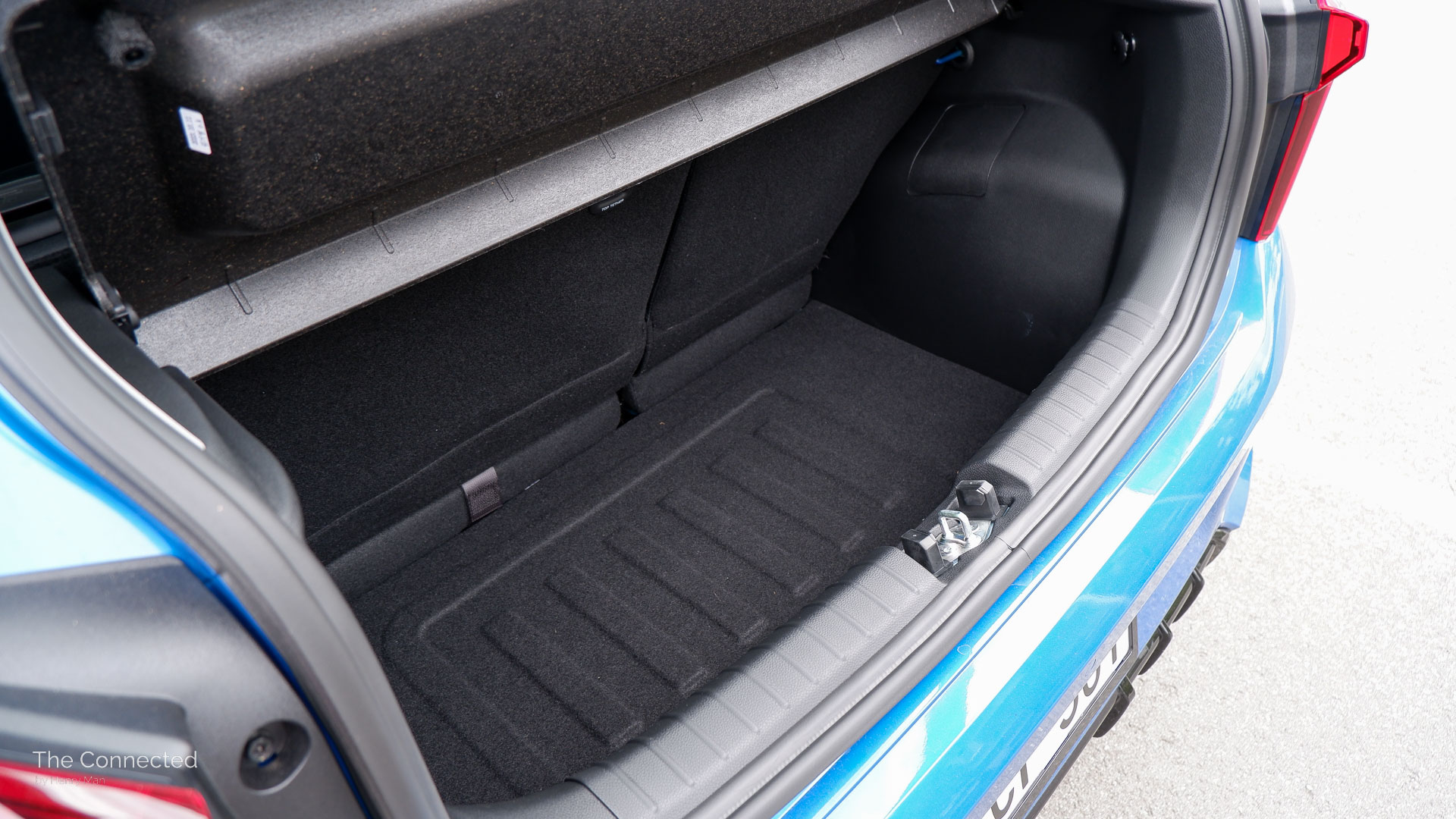
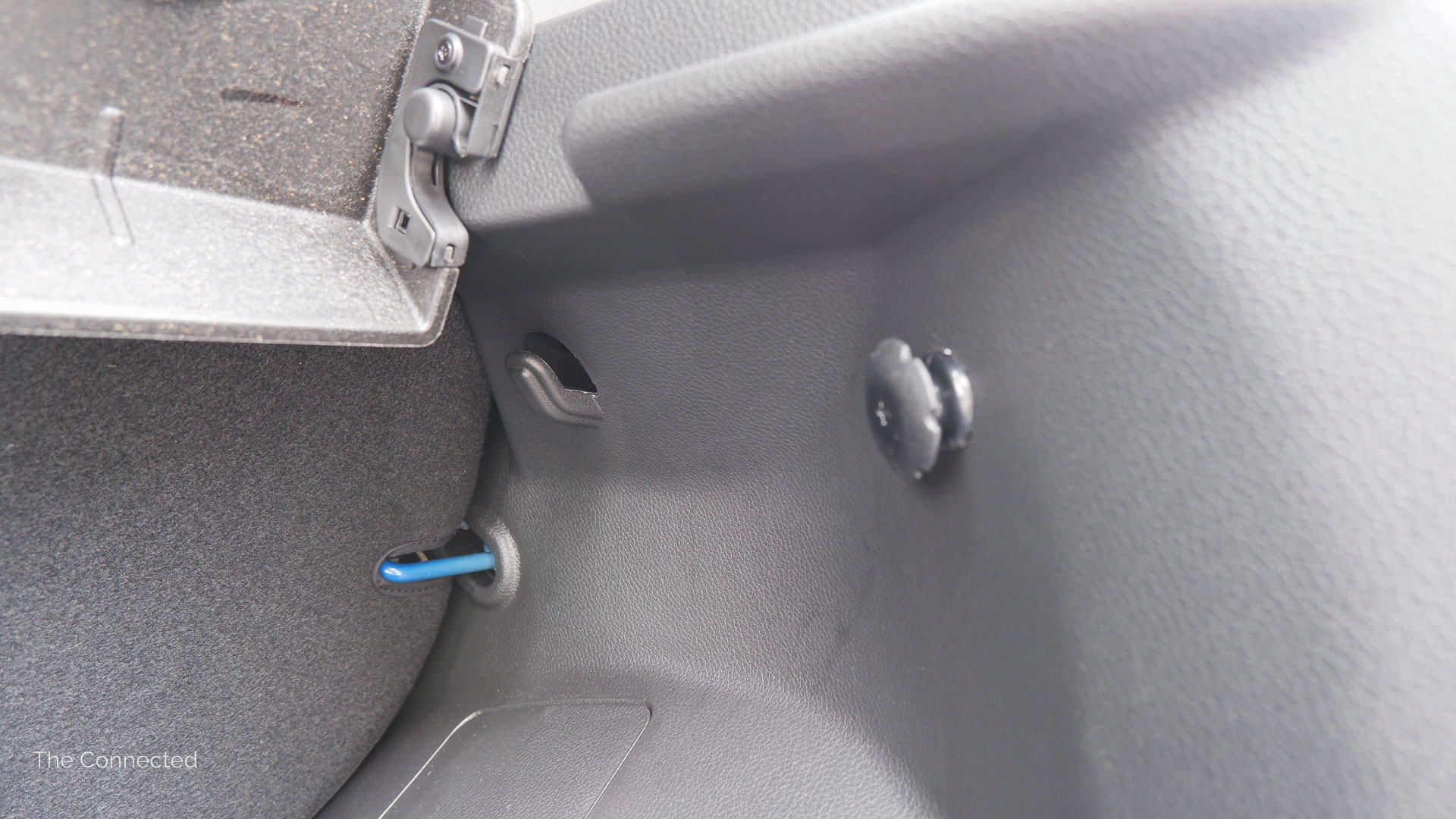


Rear seat room in the Kia Picanto can be tight, unsurprisingly. With my driving position (which tends to be closer to the steering wheel), legroom is adequate with my knees just touching the soft leatherette backrest.
But thanks to the Picanto’s van-like high roof at the back, it offers plenty of headroom.
While it is a five-seater, sitting three abreast can be squashed due to its narrower 1595mm width, despite a minimal centre floor hump. Two ISOFIX child seat anchor points are offered, along with a pocket behind the front passenger seat.
The GT-Line gains a USB-C charging port for rear passengers – though all Picanto’s lack a fold-down centre armrest with cup holders, rear light illumination, and any form of door storage slot.
It’s worth noting that some more expensive new cars also don’t include the former two in a bid to save costs.
There aren’t any rear air vents either, but the small interior and strong vents up front means they can direct air to the back passengers well.
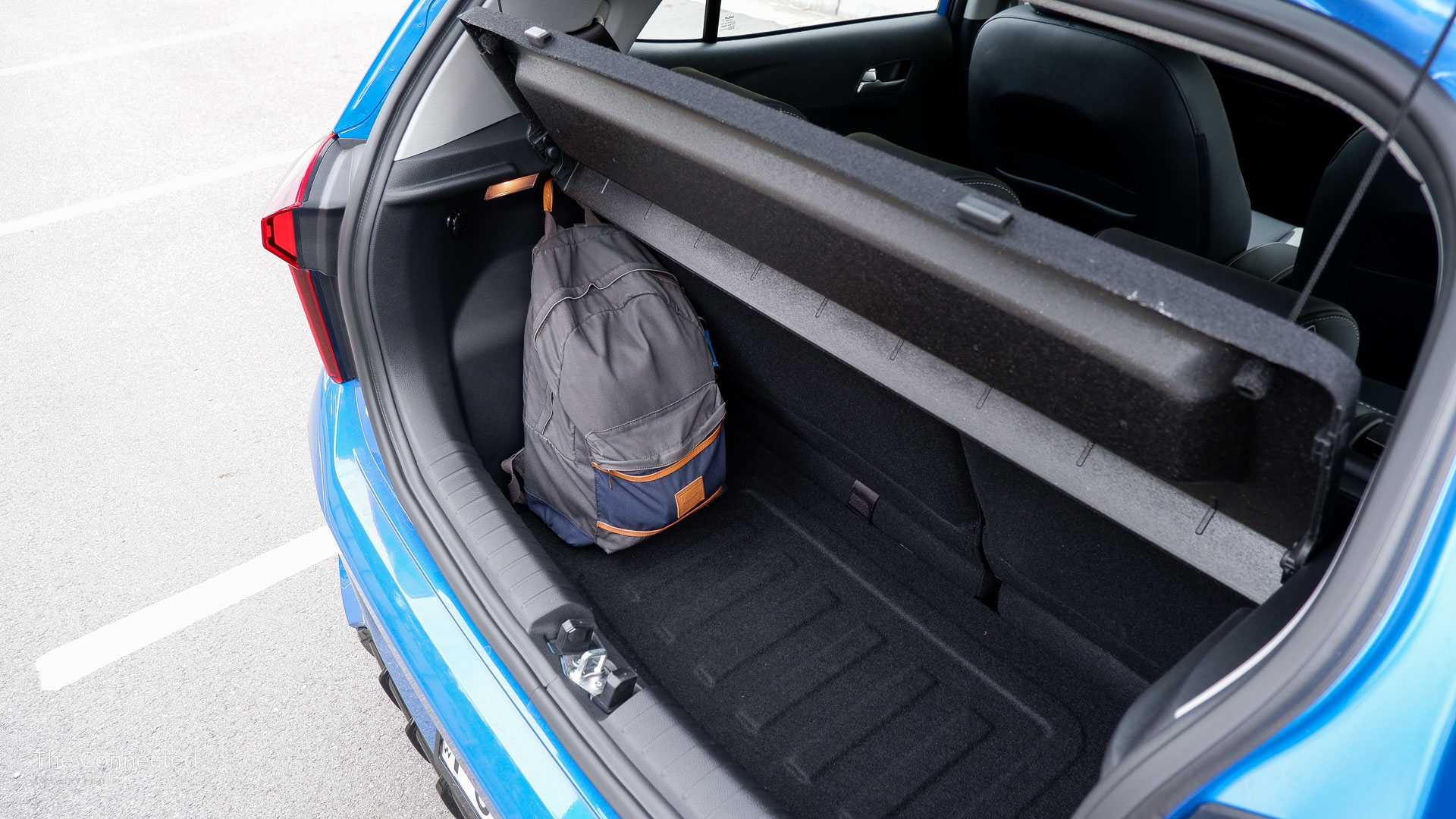
How much space do you really need?
The small, but practical Picanto reminds you how much space you really require everyday – given most only commute with one or two occupants and some bags in the car.
Up front, the little Picanto maximises its space well.
The affordable new car features centre console storage, a two-level tray ahead of the gear shifter (though the upper one is strangely narrower on the right side), and two cup holders that cleverly pop-out when needed and can retract to provide more storage space (as found on other pricier family SUVs from the South Korean carmaker).
The glove box flops down when opening and doesn’t include a light, but this is an understandable compromise given its affordable price tag. The facelift also brings a USB-C charging port to complement the single USB-A.
Additionally, the front row is only home to one single halogen bulb light on the ceiling (usually there’s one for the driver and front passenger) to illuminate the entire interior – but is surprisingly bright enough, unlike some cars with LED bulbs.
There’s even a tiny centre armrest with storage space, which isn’t guaranteed at this budget new car price point, though it can’t slide forward as on some other Kia models.
The GT-Line’s black and grey leatherette seats are comfortable on long drives too, though they can feel warm on hot weather days.


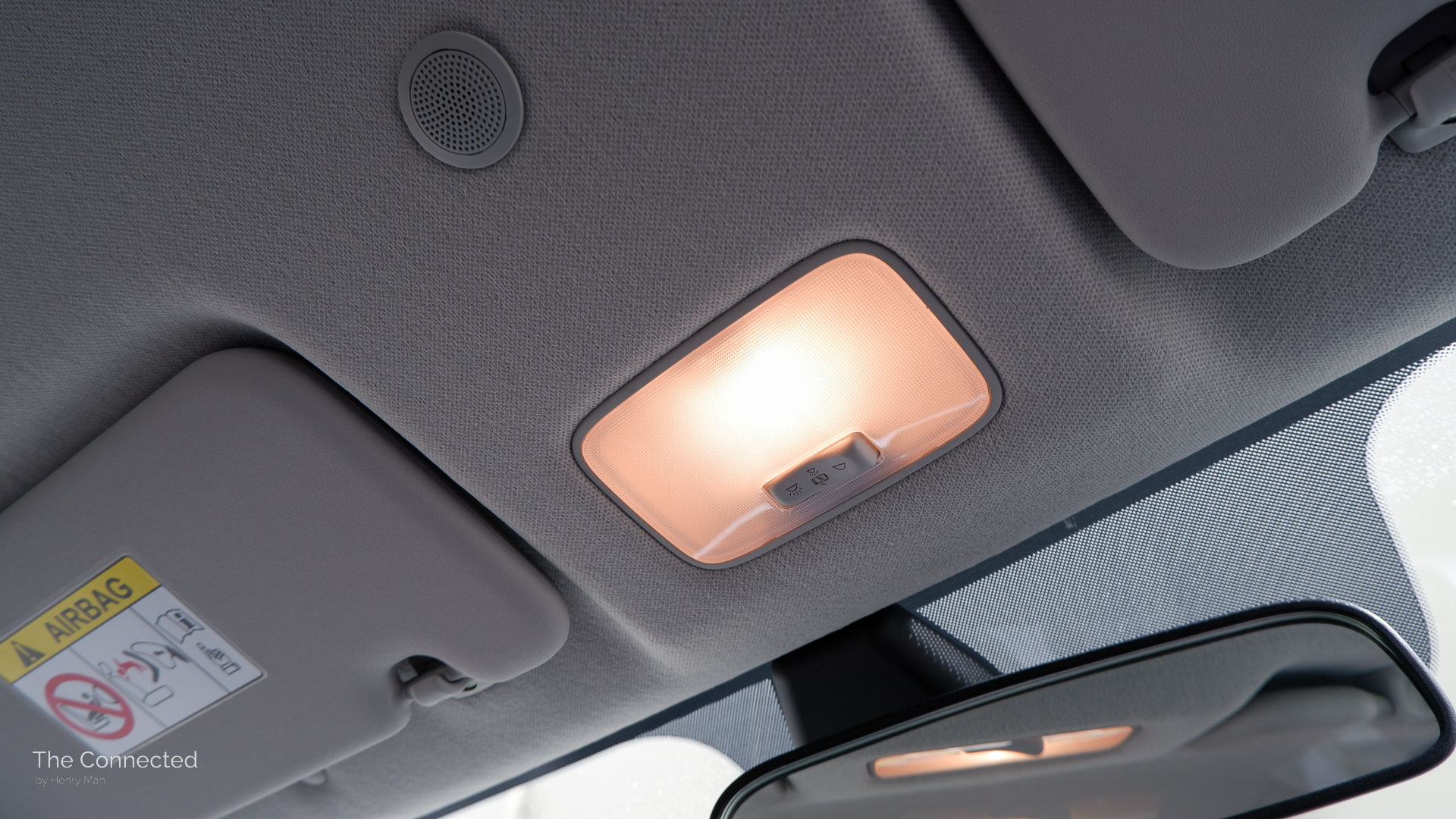

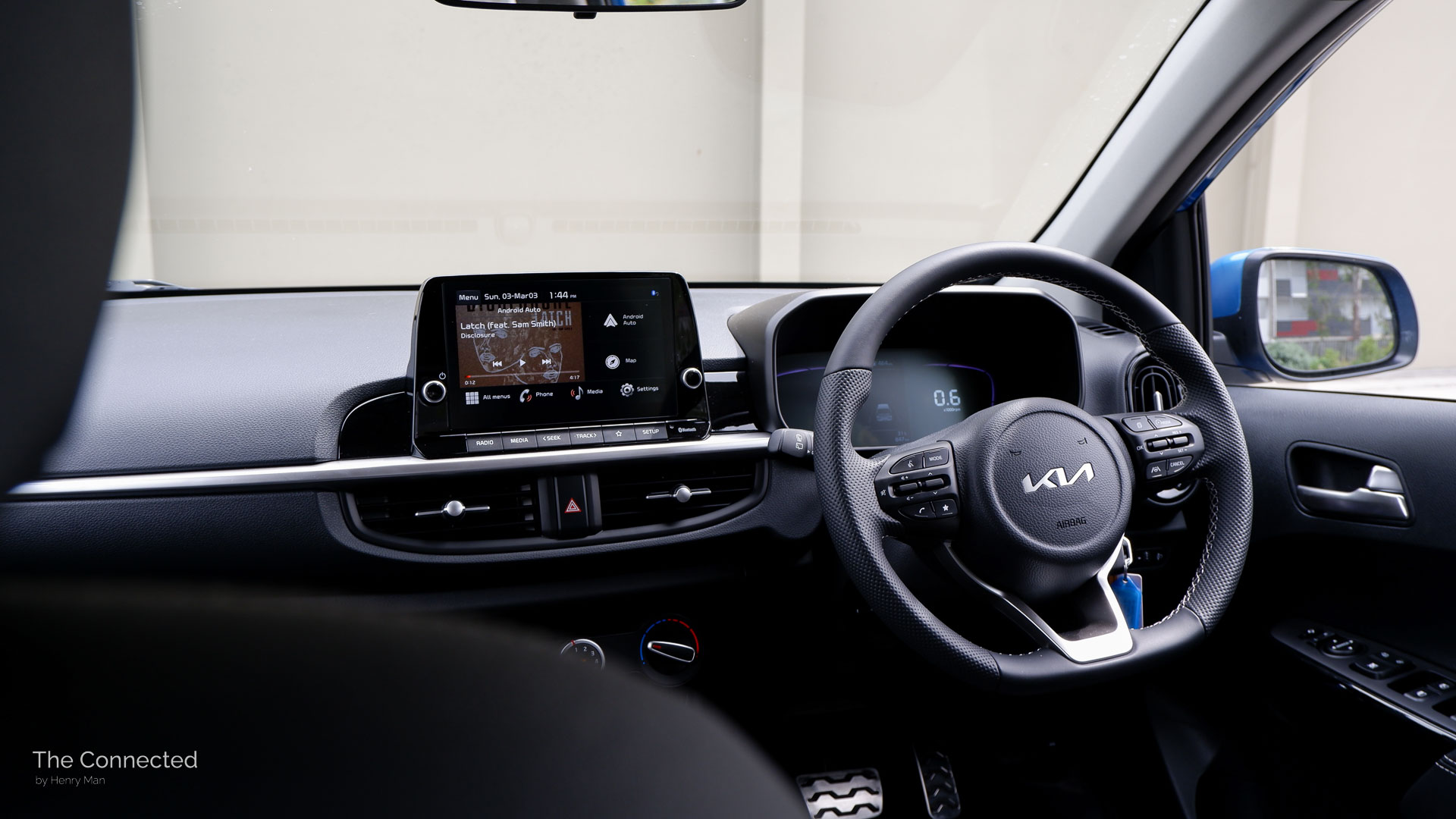
Technology.
2024 Kia Picanto GT-Line tech features:
| 8.0-inch touchscreen | Digital driver instruments with 4.2-inch centre display |
| Wireless Apple CarPlay and wireless/wired Android Auto | Four speakers |
| 1x USB-A, 2x USB-C charging ports, 1x 12V socket | Auto-folding wing mirrors |
The Kia Picanto covers the technology basics, with a snappy 8.0-inch touchscreen with wireless Apple CarPlay and Android Auto.
While basic, the built-in operating system is quick to boot up and transition between screens, with customisable widgets on the home screen, a row of ergonomic physical shortcut buttons, and two favourite buttons that can be programmed to a list of functions.
Wireless Android Auto connects within seconds and performs the same as a standard wired connection.
Even though there’s no Qi wireless charging pad available on the Picanto in Australia, I found that it only drained about 10 per cent of my Google Pixel 7 Pro’s battery in a one hour trip. There’s USB-A and USB-C charging ports available if needed.
You can force a wired-only connection for Android Auto via the single USB-A port, but not Apple CarPlay.
The display is clear and features an excellent matte coating with good fingerprint resistance.
However, the over-sensitive light sensor (read more below) forces the touchscreen and instrument display to intermittently dim its brightness too much when simply driving under shadows during daylight.
This still applies with the auto light function disabled and, even though you can switch to manual brightness in the touchscreen’s settings, it doesn’t automatically switch to night mode when actually driving in low-light conditions.



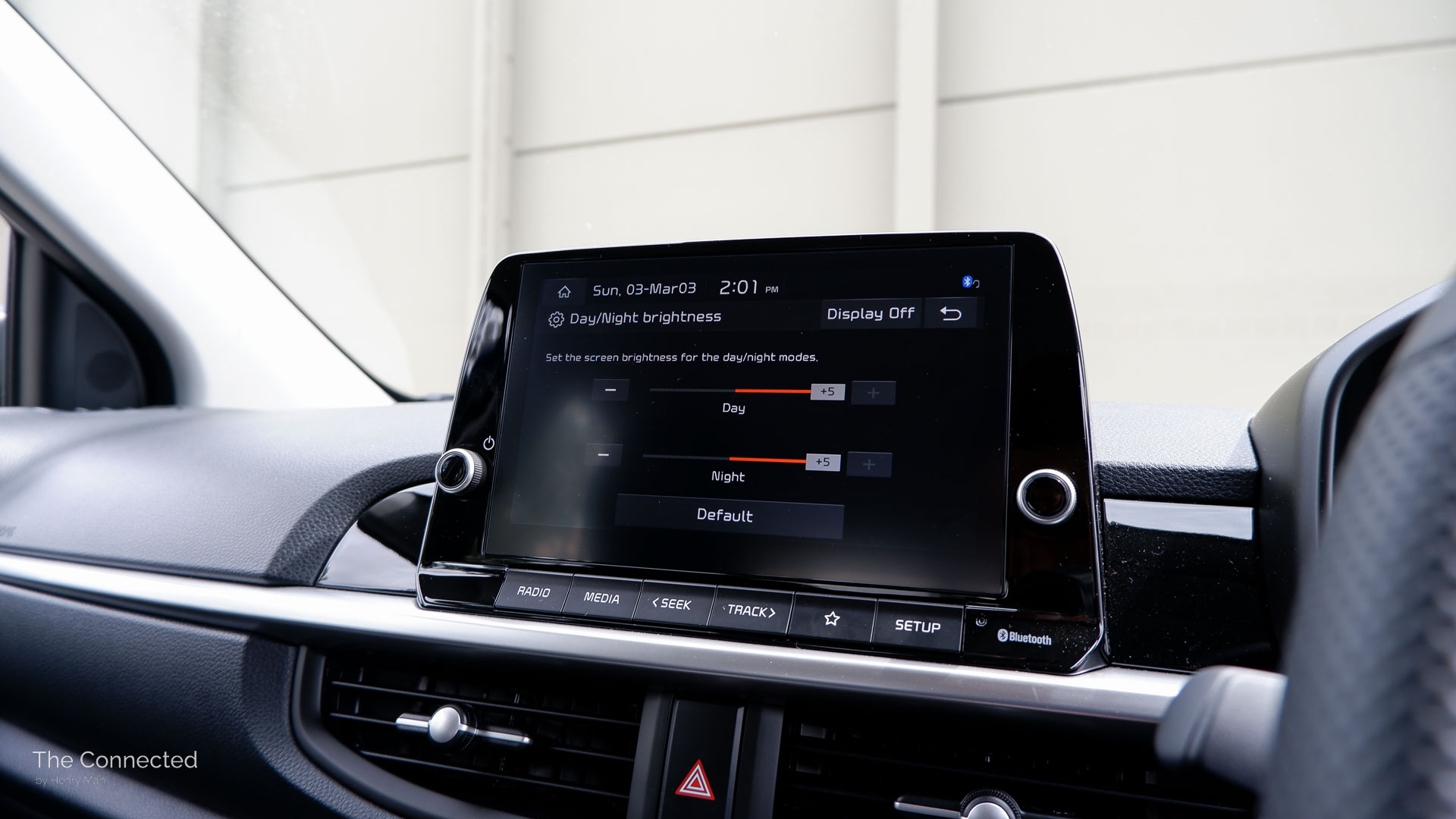
Additionally, the facelifted Kia Picanto brings a new digital driver’s instrument display with a 4.2-inch centre screen as standard – shared with some models of the Seltos, Sportage and Sorento SUVs.
It cleverly integrates digital dot matrix style numbers (the speedometer and rev counter) with a middle screen to give the impression of a full digital instrument display – while providing the same functionality as a proper full screen on more expensive Kia’s.
There’s also a cool-looking colour spectrum that lights up as the revs go up (customisable with three colours). The centre display is operated via the steering wheel switches and, due to the older operating system, the safety assistance and convenience settings are adjusted here.
The digitised driver’s instrument cluster is a welcome change to the refreshed Picanto’s interior – a stark contrast from the original model that didn’t even display a digital speedo.
Meanwhile, the air-conditioning controls are tactile and easy-to-operate across three dials.
The refreshed Picanto doesn’t bring Kia Connect cellular and mobile app connectivity in Australia, despite being available in overseas markets. This is an acceptable omission given the sub ~$24K drive-away price tag, though.


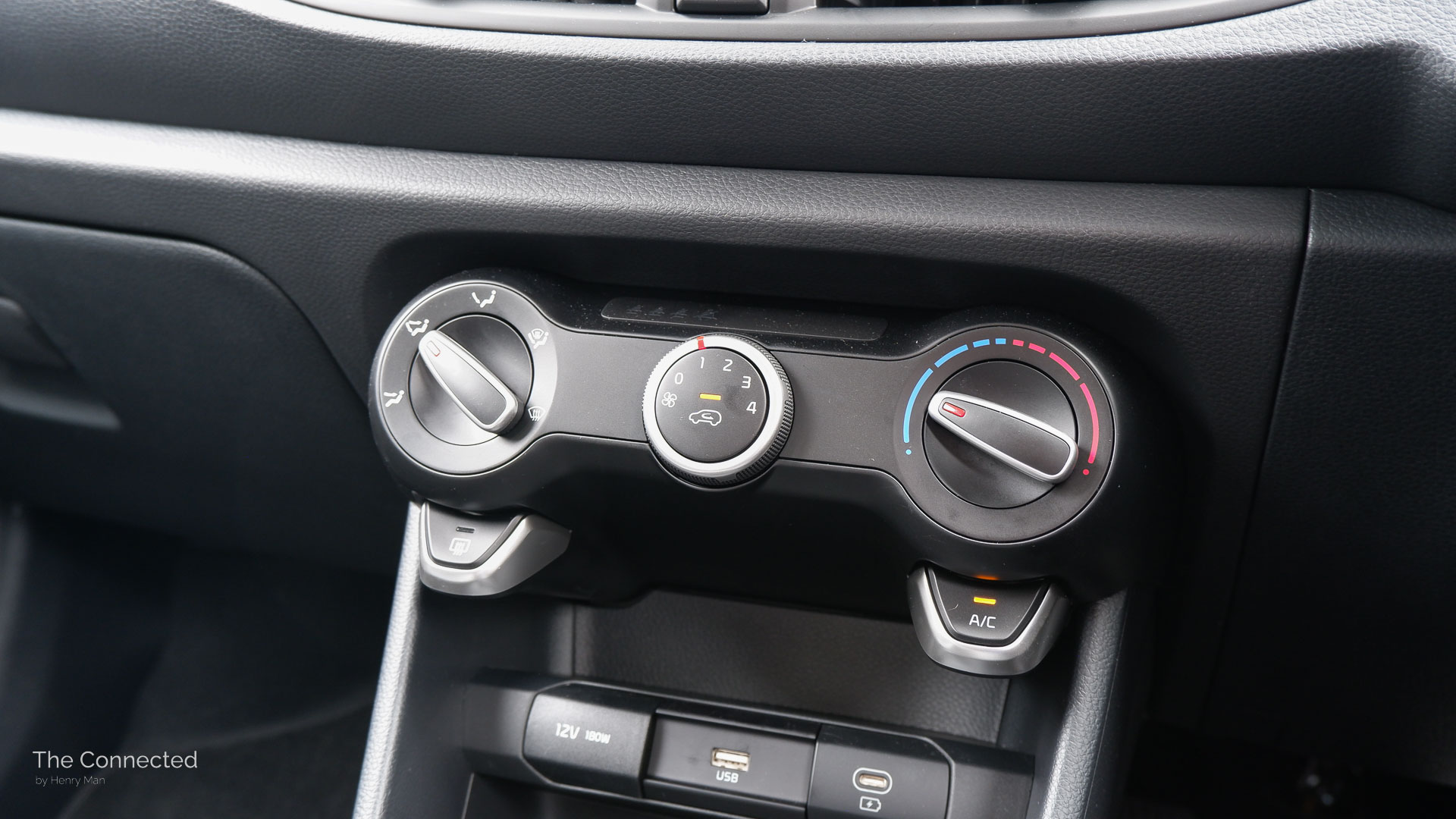

The four speaker system is adequate for its size and does a good job at drowning out outside noises.
However, a key annoyance is that the new Kia Picanto still only has a traditional key, requiring owners to press the fob to unlock/lock the doors and put the key in the ignition.
While some may welcome the traditional method, the more convenient proximity key is available on the Picanto overseas – including New Zealand – which could’ve added a more unique selling point to the flagship GT-Line in Australia.
The facelift now automatically folds/unfolds the wing mirrors when locking and unlocking respectively on all models, though.
Thankfully, the Picanto now longer irritatingly chimes when the driver starts the ignition without the seatbelt on.

Safety.
2024 Kia Picanto GT-Line safety features:
| Front auto emergency braking (AEB) with vehicle detection | Driver attention monitoring |
| Lane-centring and lane-keep assist | Rear occupant alert (basic type) |
| Blind-spot assist | Reversing camera |
| Rear cross-traffic assist | Rear parking sensors |
| Door open warning | Full LED headlights with light bar and auto high beam |
| Lead vehicle departure alert | LED-incandescent combination tail-lights with light bar and rear fog light |
The refreshed Kia Picanto brings a welcome range of active safety assistance technologies as standard, along with bright LED lights on the GT-Line.
The affordable new car has swapped to a camera-only system at the front, with a well-tuned lane-centring assist system that smoothly keeps the car in the middle of the lane, non-intrusive lane-keep assist, and a convenient warning when the vehicle in front drives away.
Meanwhile, the addition of radars at the back finally adds blind-spot assist, rear cross-traffic assist when backing out of a spot, and even a door open warning to avoid ‘dooring’ other road users when parked.
It’s an impressive feat that Kia has managed to pack a range of well-calibrated, non-intrusive safety assist technologies to the new Picanto for just $1600 more than the previous model.
Unfortunately, the front auto emergency braking (AEB) isn’t as advanced and cannot detect pedestrians, cyclists and junction turning situations, and adaptive cruise control isn’t offered in Australia due to a lack of a front-facing radar.
These compromises are acceptable, given the Picanto’s attainable price tag – starting from just below ~$21K drive-away depending on the state.
The standard cruise control annoyingly doesn’t show what speed you’ve set it at, while the carryover reversing camera displays a lot of noise in low-light conditions.

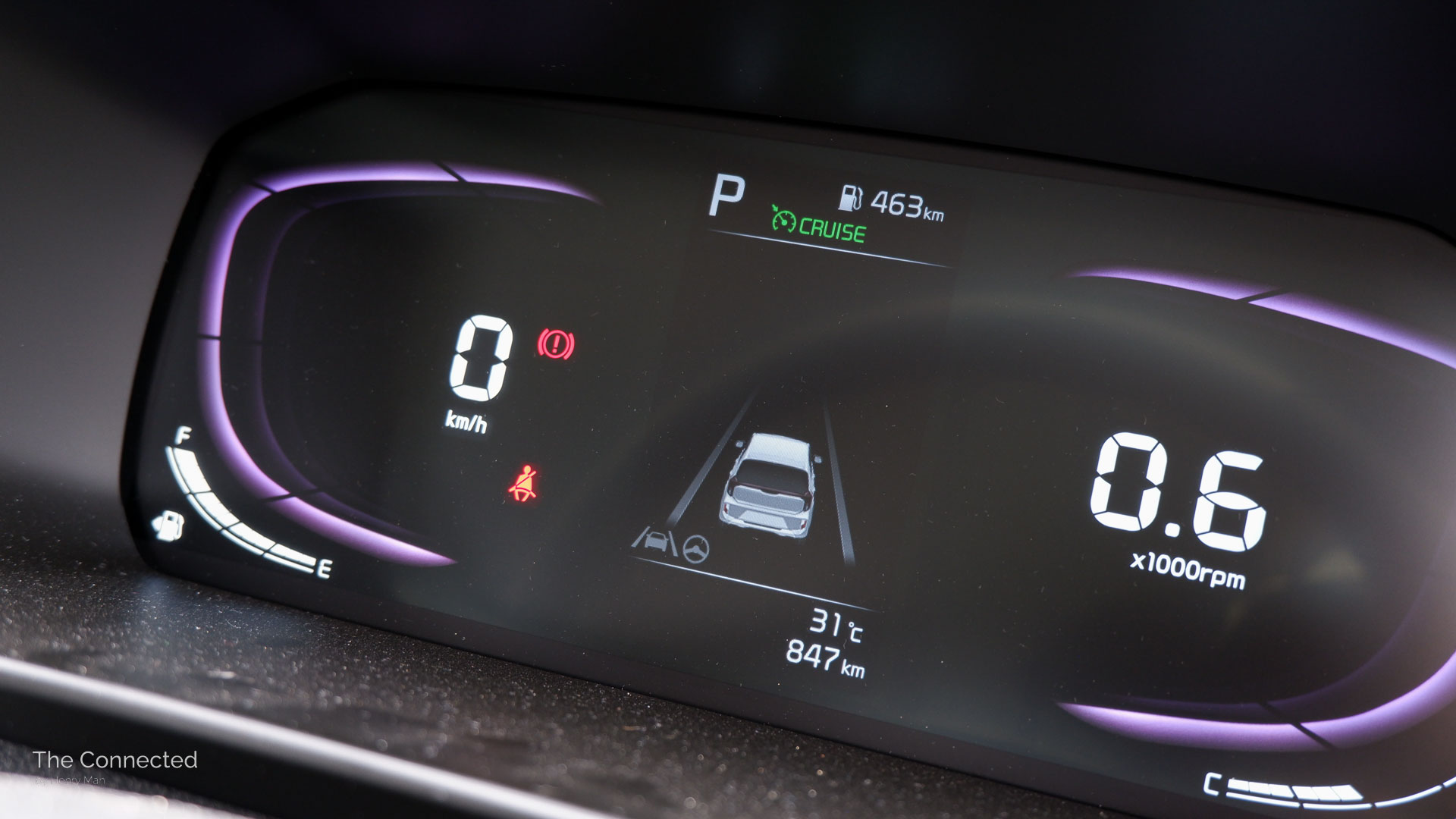



Safety tech democratised.
Safety assist technologies that were once reserved for flagship large vehicles are now accessible on an entry-level affordable new car thanks to the facelifted Picanto.
Furthermore, the Picanto GT-Line’s LED lights are a key attraction to spend the extra $1800 compared to the base Sport, which is only fitted with dim halogen bulbs including the daytime running light (DRL).
While it’s a reflector-type LED headlight, the micro car still offers impressive performance at night with great reach and spread – even putting some more expensive cars into question. It also offers an auto high beam function.
There’s no mistaking the Picanto GT-Line on the road with its sharp full LED headlights – including the DRLs and front indicators – full-length front and rear light bars that turn on with the headlights, and the new addition of a rear fog light.
It’s worth noting that the rear indicators are still incandescent bulbs and the reverse light is only on the left side.
However, the key fustration with the Picanto is an over-sensitive light sensor – which tends to activate the night lights when driving under shadows, such as a tree or bridge, during bright daylight.
I’ve experienced the same key frustration on the Kia Seltos small SUV, as opposed to models such as the Stonic, Sportage and EV6 which are all better calibrated.
Fortunately, the automatic lights can be easily switched off with a flick at the stalk (and it still chimes to remind you that headlights are off if it thinks you need it on) – but it’s disappointing that this feature, which should help drivers, is over zealous.

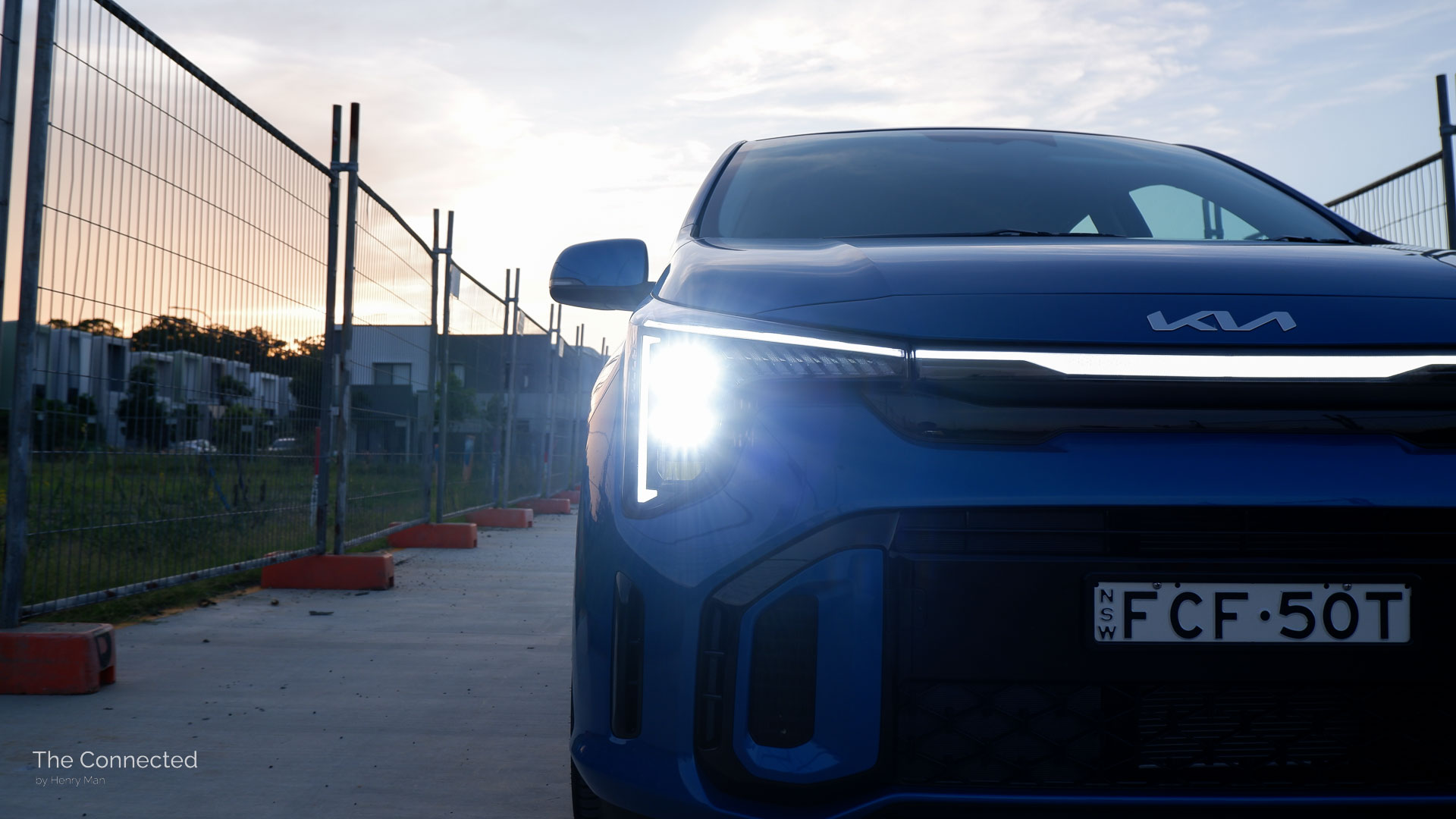


Despite its compact size, the Picanto offers excellent all-round visibility with large windows (the front glass is even lower than the dashboard), good-sized wing mirrors, and a short bonnet.
Fortunately, it doesn’t feature the Hyundai Motor Group’s irritating European-compliant speed limit assist system, which is rolling out to all other new or updated Kia vehicles.
The updated 2024 Kia Picanto is unrated by the Australasian New Car Assessment Program (ANCAP), as at the time of publication.
The original pre-facelift models had a four-star safety rating under ANCAP’s less strict 2017 testing criteria – which is now expired.

Range and fuel consumption.
2024 Kia Picanto GT-Line fuel and efficiency specs:
| Claimed driving range (combined) | 583km |
| Claimed fuel efficiency (combined) | 6.0L/100km |
| Fuel tank | 35 litres |
| Minimum fuel quality requirement | 91 RON unleaded petrol |
| Claimed CO2 exhaust emissions (combined) | 125g/km |
| European emissions compliance | Euro 5 |
In my week driving a mix of heavy traffic, urban and highway environments, the new Kia Picanto indicated a 6.9L/100km real-world fuel consumption.
This equates to about 507km real-world driving range from its 35-litre fuel tank.
Even though it can accept cheaper and lower quality 94 RON E10 unleaded petrol, the fuel tank is, understandably, quite small and I found myself needing to refill more frequently.
In times of extended fluctuating fuel price cycles, this can be annoying and costly in the long-run.
The tested fuel consumption is also quite high for its small size, light weight and low power outputs. A newer engine with more gears (to suit highways) or an electrified system could make the Picanto more economical, as per the new MG 3 hybrid.
The fuel lid is opened via a toggle on the driver’s side seat floor and is located on the left-rear quarter side of the Picanto. Once untwisted, the cap can be placed inside the lid to avoid it dangling on the bodywork.
Since it’s placed towards the rear and due to the Picanto’s compact size, I found the fuel lid slightly lower for inserting the fuel pump, and needed to wrangle more with thick and inflexible cables.



Driving.
2024 Kia Picanto GT-Line (auto) powertrain specs:
| Engine | 1.2-litre four-cylinder, naturally-aspirated petrol engine |
| Power | 62kW @6000rpm |
| Torque | 122Nm @4000rpm |
| Transmission | Four-speed torque converter automatic |
| Drive Type | FWD |
| Kerb weight | 1018kg |
| Towing (unbraked / braked) | N/A |
The refreshed 2024 Kia Picanto hasn’t received any changes to its engine and transmission. Is 62kW of power and a four-speed auto enough?
The 1.25-litre ‘Kappa II’ petrol engine dates back to 2011 – and it shows with a loud and high-revving startup, plus it noticeably sends rough vibrations and engine noise in the interior when idle.
While 62kW of power and 122Nm of torque may seem measly – especially when they only deliver at a high rev range – the Picanto’s light 1018kg kerb weight means it can still move and get up to speed in a reasonable time.
Yes, more patience is needed at times when accelerating. The lack of power is especially noticeable when going up steep hills, but once the transmission kicks down, the Picanto can still increase its speed with the sound of a high-revving, stressed out engine.




Drivers can force the transmission to cap at third, second or first gear ahead of time to compensate, using the gated leatherette gear shifter which doesn’t require pressing a button on the stick.
The four-speed automatic transmission isn’t an annoying limitation when driving around urban and suburban roads with a 60km/h speed limit – but it isn’t suited for highways.
At 100km/h, the Picanto sits at 3000rpm in fourth gear. This results in a high fuel consumption (as above), but the silver lining is it’s closer to the 4000rpm rev mark for peak torque – providing a good push for overtaking without the need to wait for the transmission to kick down a gear.
The five-speed manual is theoretically better for the highway, but is inconvenient for city driving and is only $1000 cheaper than the four-speed auto. Kia previously offered a slightly more powerful GT model with a turbocharged three-cylinder engine, but has been discontinued.

Underpowered really?
Despite the low power outputs, the Picanto’s light weight means it still moves reasonably well, though more patience is needed.
Due to its compact size, it’s fun to drive and refreshingly nimble for easily fitting into gaps in city traffic and parking.
While the engine is revving high on the highway, it isn’t as noticeable given the poor noise insulation with outside noises, the sound of other vehicles, and road roar from the GT-Line’s larger 16-inch alloy wheels drowning out the ‘screaming’ engine.
The Picanto GT-Line’s ride is on the firmer side when going over speed humps, patches and coarser roads – not helped by its lower profile 195/45 Nexen N Blue HD Plus tyres compared to the base Sport – but isn’t too egregious and too uncomfortable.
It’s worth noting that the affordable hatch uses disc brakes on all four wheels (instead of the cheaper drum type), but strangely produces more brake dust than usual and covers the alloys in my week of testing.
Additionally, a key advantage to the Picanto is its refreshingly compact size and light steering – making it quite fun and nimble to drive and fit into gaps in traffic, at roundabouts, and easy to park in spaces that are usually considered tight for even a Kia Stonic light SUV.
It’s easier to judge where the car is than larger vehicles, too, with large windows and a short bonnet.
Keep in mind the low 141mm ground clearance with a protruding plastic lip under the front bumper, which is more succeptible to scraping.
Unfortunately, the steering wheel still cannot adjust in-and-out (only up-and-down) – potentially resulting in an unideal driving position for some. Drivers need to adjust the seat to suit the wheel; it was acceptable for me.
However, the narrow driver’s footrest can be annoying with my large-sized shoes sitting half on the ‘dead pedal’ while driving.

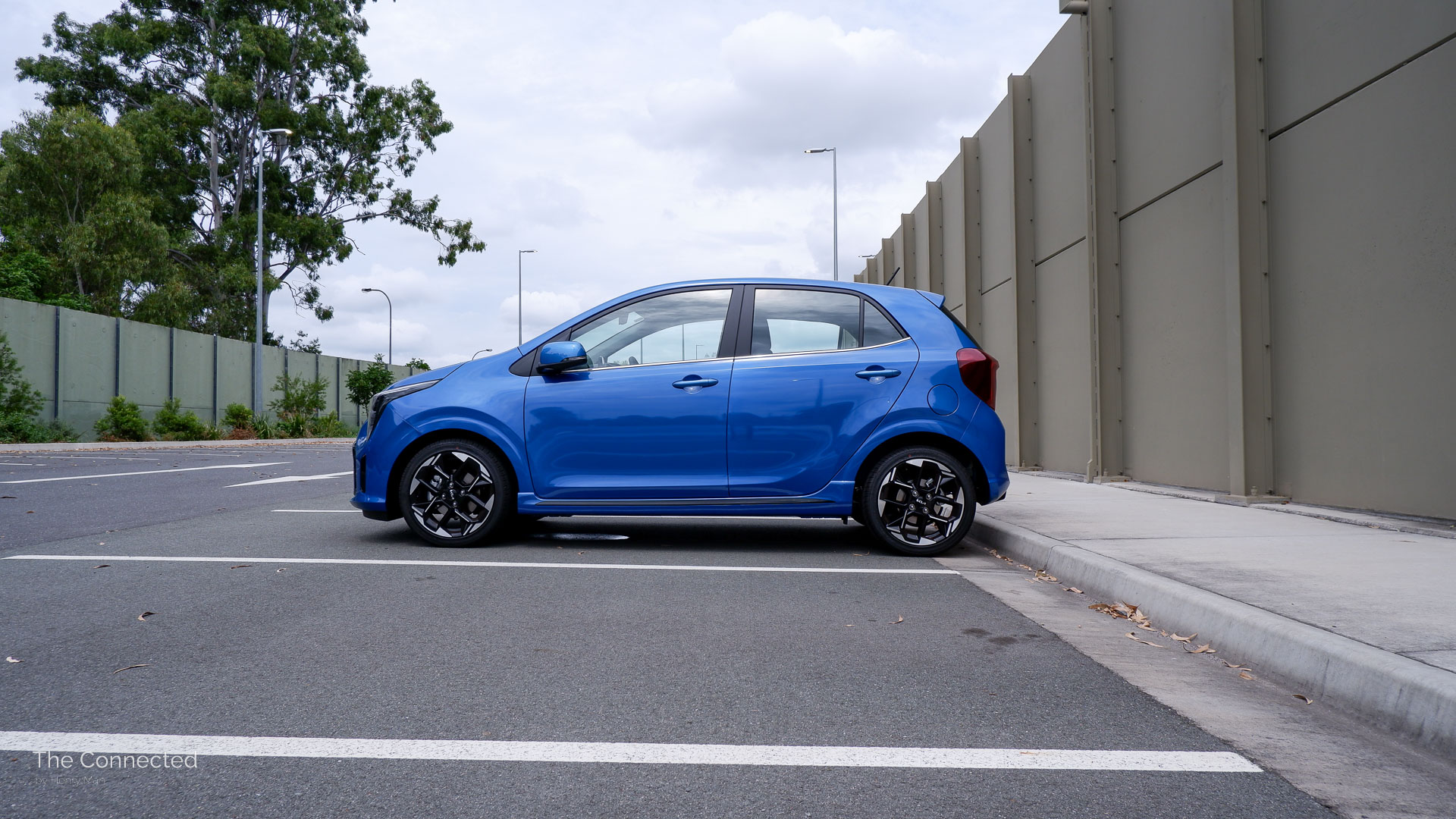



Ownership.
2024 Kia Picanto GT-Line capped-price servicing prices:
| 1 year/15,000km | 2 years/30,000km | 3 years/45,000km | 4 years/60,000km | 5 years/75,000km | 6 years/100,000km | 7 years/105,000km |
|---|---|---|---|---|---|---|
| $310 | $506 | $367 | $537 | $349 | $630 | $370 |
The Kia Picanto is covered by a seven-year, unlimited kilometre vehicle warranty.
Servicing is required every one year/15,000km (whichever comes first), with prices capped up to seven years/105,000km.
After the first five visits, it’ll cost $2069 to maintain the Picanto – averaging to $413.80 per service.
For an entry-level micro car, servicing the Picanto is quite expensive – coupled with a higher than ideal tested fuel consumption and small fuel tank, resulting in pricier running costs.
Up to eight years of roadside assistance is included, which is renewed every year after each logbook service.
A temporary space saver spare tyre is included under the boot floor.

Price & rivals.
2024 Kia Picanto model range pricing (excluding on-road costs):
| S (manual) | S (auto) | GT-Line (manual) | GT-Line (auto) |
|---|---|---|---|
| $17,890 | $19,490 | $19,690 | $21,290 |
Starting prices are accurate as at the time of publication and excludes mandatory on-road costs (unless labelled as ‘drive-away’).
The 2024 Kia Picanto directly competes with:
- MG 3 – from $19,990 drive-away (clearance model)
- Suzuki Ignis – from $21,490
- MG ZS – from $23,990 drive-away
- MG 5 – from $24,990 drive-away
- Fiat 500 – from $27,220
It’s worth noting that the all-new MG 3 hybrid light hatch will be coming to Australia later in 2024, with an expected starting price tag of around $25,000.
Other alternatives to the 2024 Kia Picanto include:
- Hyundai Venue – from $22,500
- Mazda 2 – from $22,870
- Suzuki Swift – from $23,490
- Mitsubishi ASX – from $24,490

Would I pick the 2024 Kia Picanto GT-Line?
The facelifted Kia Picanto epitomises the essential new car – now elevated with advanced safety assist tech, a sharp design and, importantly, a still attainable price tag.
While it’s no longer cheaper than the $20K drive-away mark, the new Picanto still represents excellent value with a refreshing compact, nimble but practical size that’s enough for most driver’s needs (think: I mainly commute myself with a backpack in the car anyway).
It’s an impressive achievement that the exterior design has levelled up into more upmarket territory and now packs well-calibrated active safety assist systems as standard for just $1600 more than the previous model.
However, the auto light sensor is annoyingly too sensitive and needs a recalibration, the unchanged engine feels old and unrefined, and the high tested fuel consumption, small fuel tank and pricier servicing costs mean it isn’t as cheap to own in the long run – which could be the key dealbreaker.
It’s also a shame that the top-spec GT-Line also still lacks a convenient proximity key function, despite being available overseas including New Zealand.
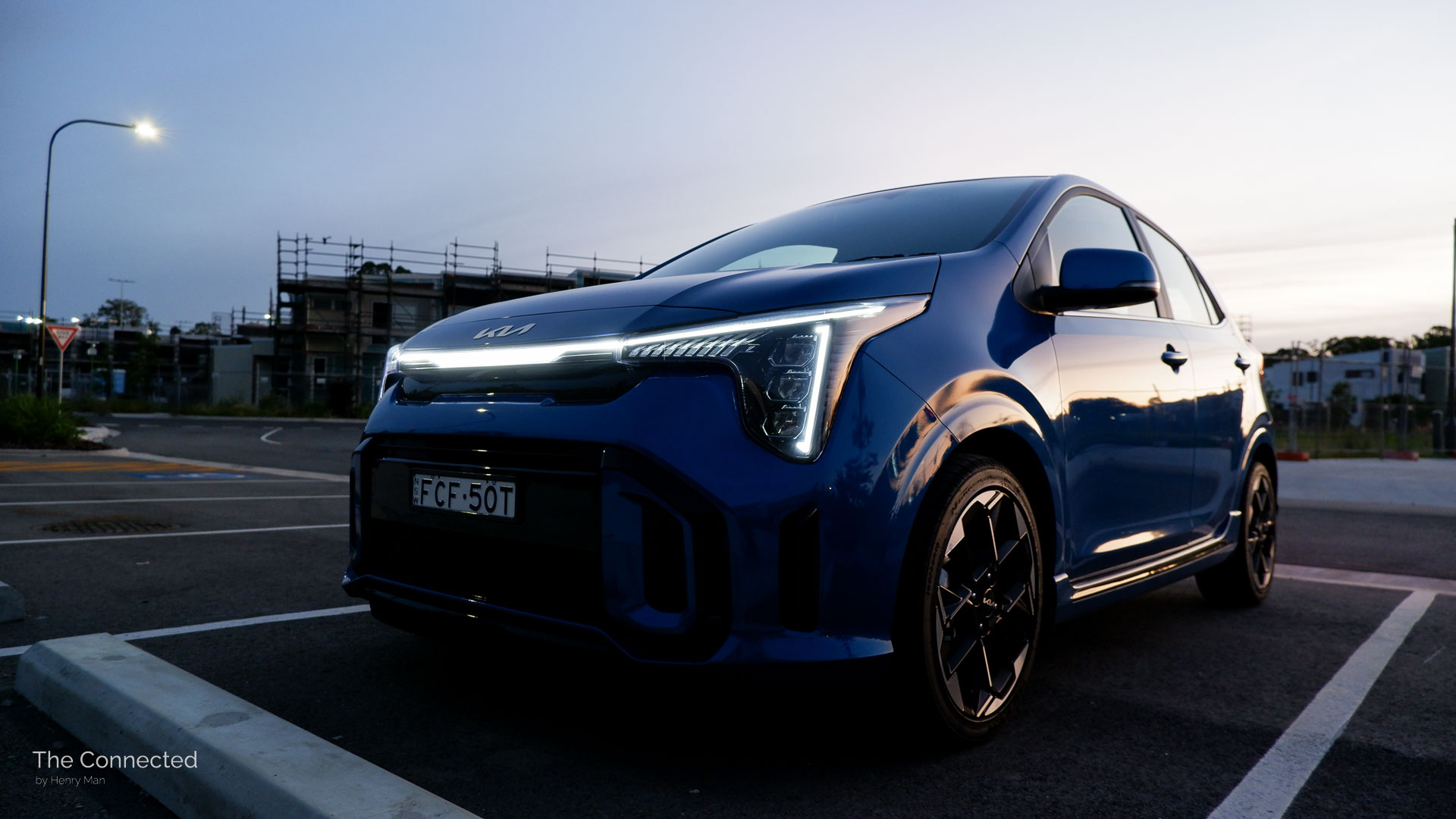

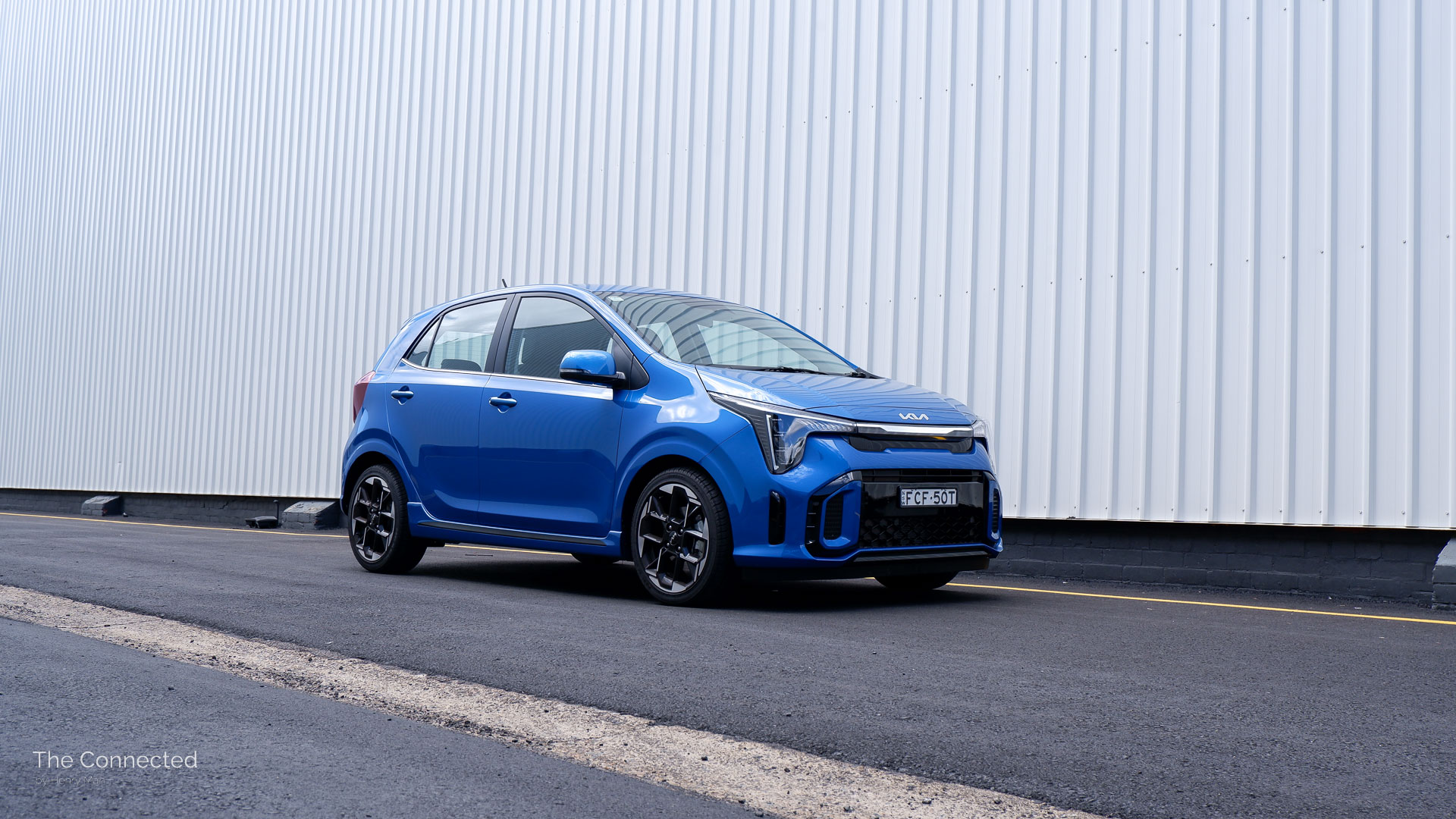

While the base Kia Picanto Sport is the best value pick at under ∼$22K drive-away with all safety tech as standard, it’s hard to go past the much more striking-looking GT-Line for $1800 more.
For a city-focused car, the four-speed auto is simply more convenient at just $1000 more than the five-speed manual, despite the latter being better suited for highways.
It’s a world away from the controversially unsafe MG 5 sedan. But, its biggest threat is the new MG 3 hybrid – which offers a larger size and fuel-saving petrol-electric hybrid powertrain for about the same price as the Picanto GT-Line. That will be one to watch…
The updated Kia Picanto demonstrates that one of Australia’s cheapest new cars can still be well-built, feature packed with tech and safety, and not look boring. It is the essential car, now elevated.
Photographs by Henry Man
READ MORE: 2024 MG 4 Essence 64 review: The people’s EV.
READ MORE: 2024 Kia Seltos review: Now on brand.
READ MORE: 2023 Kia EV6 GT review: True electric GT?
About the Author.
Henry Man is an independent content producer passionate about the intersection of technology and transportation. He is committed to critically detailed vehicle reviews, balanced reporting, and producing content in the public interest.
The Connected is an altruistic initiative to publish content free from commercial interests, while highlighting how tech and media shapes everyday society. Learn more.
Henry is an alum from The University of Queensland with a Bachelor of Communication/Journalism (with majors in Public Relations and Digital Media). He has worked with organisations including Wheels Media, Zecar, and CarExpert.


